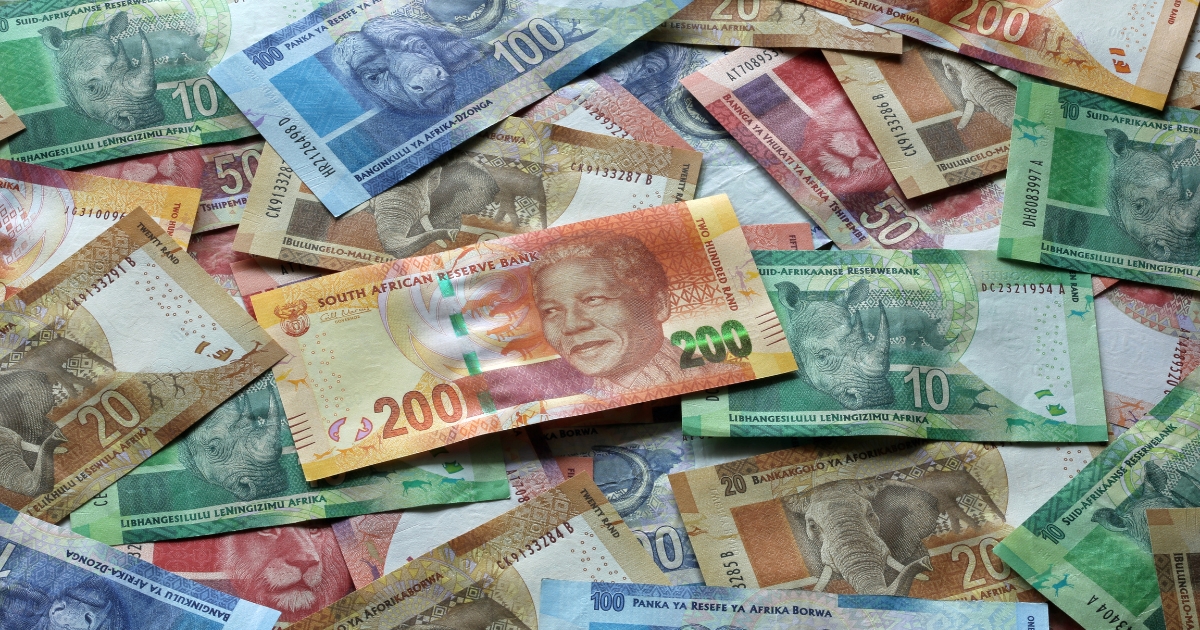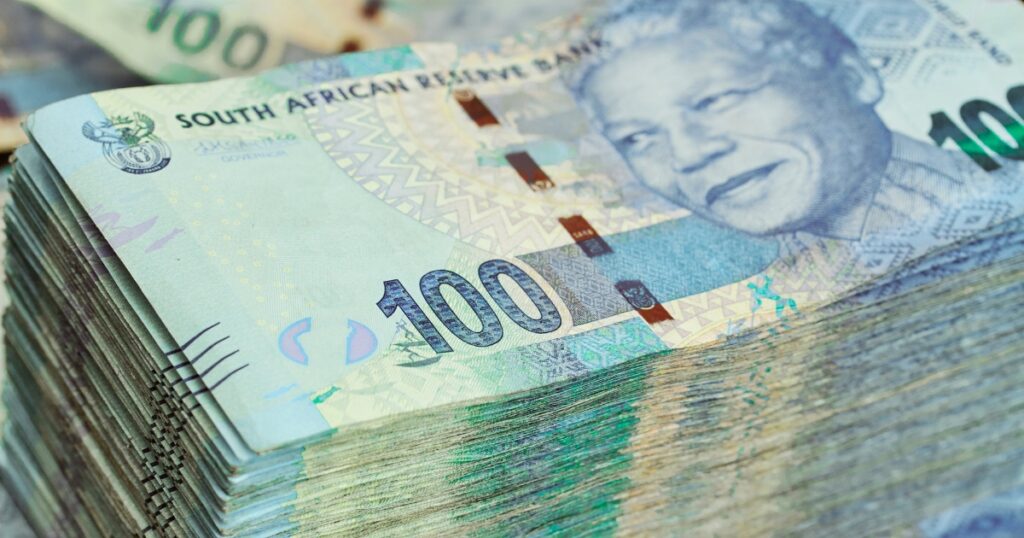
The South African rand faces a pivotal year in 2025, with analysts assessing whether conditions are finally aligning for a recovery. Softer expectations for the US dollar, rate cuts by the South African Reserve Bank, and progress at Eskom and Transnet point to cautious optimism. However, fiscal challenges, commodity price swings, and geopolitical uncertainty continue to weigh heavily, leaving it unclear if the rand can regain lasting strength this year.
Key Takeaways
- Global Dollar Pressure Could Benefit the Rand: Expectations of US interest rate cuts in 2025 may weaken the dollar, creating favourable conditions for emerging market currencies, including the rand.
- Domestic Reforms Show Progress but Risks Remain: Improvements at Eskom and Transnet, along with reduced load shedding, provide some optimism, yet growth remains subdued and structural weaknesses continue to weigh on investor sentiment.
- Forecasts for the Rand Remain Divided: Analysts project widely different outcomes, ranging from a strengthening to R14 by 2026 to a weakening beyond R23, highlighting ongoing uncertainty in both global and local conditions.
About Arcadia Finance
Arcadia Finance makes securing your loan simple and hassle-free. Benefit from a fee-free application process and choose from a curated list of 19 reliable lenders. Each lender complies with South Africa’s National Credit Regulator standards, providing dependable and regulated financial solutions.
Why Could 2025 Be a Turning Point for the Rand?
While nothing guarantees a revival of the rand, several recent developments suggest the year could unfold differently. A Reuters poll in June indicated that most emerging-market currencies are expected to hold gains or even climb further as the US dollar gradually softens. Though the rand may remain range bound, this signals a potential window of opportunity.
A key element in this scenario is continued pressure on the US dollar. A poll in early September revealed that most foreign exchange strategists expect the dollar to remain under strain, with markets pricing in at least two Federal Reserve rate cuts before the end of the year. If realised, a weaker dollar could ease the burden on the rand.
Meanwhile, the South African Reserve Bank has taken decisive steps to support the local currency. In May, the Bank reduced its key interest rate to 7.25 per cent and advocated adopting a new inflation target of 3 per cent, compared to the previous midpoint of 4.5 per cent within the 3 to 6 per cent range. At the same time, it lowered the inflation forecast to 3.2 per cent for 2025, citing a stronger rand and lower global oil prices.
By late July, the Bank’s Monetary Policy Committee had unanimously approved another rate cut, bringing the repo rate down to 7 per cent. Officials signalled their intent to anchor inflation at the lower end of the target range and to speed up reforms that could embed permanently low price growth.
These policy moves matter because they stimulate confidence among investors. Lower interest rates tend to encourage carry trade flows toward higher yielding emerging-market currencies like the rand, especially when global conditions support such strategies.
One of the critical factors influencing the rand’s potential recovery is the monetary policy decisions by the South African Reserve Bank. Rising interest rates play a significant role in currency valuation, impacting both inflation and investor sentiment.

Top Pressures On The Rand In 2025

SA’s Fiscal Discipline
The 2025 National Budget, rescheduled to 12 March, remains a focal point for both local and international investors. The government is expected to provide a financial plan that supports growth and addresses the structural weaknesses of the economy. Key issues under review include the size of the public sector wage bill, the scale of spending by state-owned entities, and the management of fiscal debt. How effectively macroeconomic reforms are carried out during the year will be central to the rand’s performance.

Volatility In The Commodity Markets
The rand, like other commodity-linked currencies, continues to be influenced by changes in global demand for resources and shifts in the strength of the US dollar. While volatility in oil and metals markets may create challenges, South Africa’s reliance on commodities such as gold and coal could also provide some support if demand strengthens. Over time, the rand generally responds to movements in the commodity cycle, gaining when trade conditions improve.

Geopolitical Shocks And Increased Trade Tensions
Tensions between South Africa and the United States, particularly around trade and aid policies, remain a source of uncertainty. The potential early suspension or non-renewal of the African Growth and Opportunity Act (AGOA) in September 2025 is a significant risk for South African exporters. In addition, South Africa’s G20 presidency faces obstacles as international cooperation is under strain, with global leaders divided on pressing economic issues. These factors, combined with the possibility of disruptive US trade policies, could increase volatility in the rand.
Geopolitical disruptions may also alter global supply chains and investor behaviour. Aggressive tariffs or unexpected trade restrictions could shift investment flows towards developed economies, weakening emerging market currencies. Rising global inflation, fuelled by energy costs and supply chain interruptions, may also create stagflationary conditions, further pressuring the rand.

Interest Rate Interventions Or Non-Interventions
The US Federal Reserve has kept interest rates steady, which has provided short-term strength to the US dollar. However, slower US growth, smaller gaps in interest rate levels between economies, and overvaluation pressures are expected to contribute to dollar weakness later in the year. Rate cuts in the European Union and the United Kingdom will add to policy divergence.
In South Africa, the Reserve Bank reduced the repo rate to 7.5 per cent in January, marking the third consecutive cut. The decision was smaller than market expectations, reflecting a cautious stance. Future policy is expected to remain conservative, with inflation trends closely monitored. There is also ongoing debate about a potential shift in the inflation target band, which could influence future monetary decisions.

Emerging Market Headwinds And Tailwinds
Emerging market currencies, particularly in Asia, are likely to remain under pressure from a firm US dollar. Higher interest rates in the United States tend to support the dollar for longer, reducing demand for riskier assets and weighing on the rand.
At the same time, there are potential sources of support. China’s currency may stabilise as a result of central bank interventions and targeted stimulus to offset weakness in its property market. Given South Africa’s close trade links with China and China’s continued role as a major consumer of commodities, stronger Chinese demand could help boost commodity-driven currencies such as the rand.
For a deeper dive into why the rand is currently battling global and local headwinds, don’t miss The Rand Is in for a Rough Ride. It breaks down the market psychology, fiscal pressures, and risk aversion that are keeping the currency under strain.
Why Emerging Market Currencies Are Volatile
Emerging market currencies often lose ground during periods of global risk aversion and gain strength when conditions are more favourable, reflecting changes in international investor confidence. When investors enter a risk-off phase, they generally shift their funds into safe-haven assets and sell holdings in emerging markets, which are perceived as riskier because of factors such as political uncertainty, limited market liquidity, and weaker regulatory systems.
The sensitivity of emerging market currencies to global sentiment is particularly pronounced because these economies depend heavily on foreign investment and lack the resources to shield themselves from external shocks. As a result, their currencies tend to be more volatile and move in line with economic cycles, in contrast to the relative stability seen in developed markets.

Emerging Market Currencies on the Rise
The MSCI International Emerging Market Currency Index has risen by about 4.3 per cent over the past year, reflecting a shift in the global interest rate cycle. Despite this broader recovery, Bloomberg data shows that the rand underperformed in 2023, ranking fourth lowest out of 22 emerging market currencies.
Economists continue to point to domestic pressures. Investec’s chief economist, Annabel Bishop, highlighted that persistent load shedding and worsening logistical constraints at Transnet throughout 2023 undermined both growth and investor sentiment.
The fluctuations in the rand’s strength over time are closely linked to its history. A look at the History of the South African Rand uncovers the key events and decisions that have contributed to both its resilience and its volatility.
There have been signs of progress more recently. President Cyril Ramaphosa convened stakeholders in May to accelerate reforms at both Eskom and Transnet through the Government Business Partnership. Congestion at the Durban container port has eased compared to late 2023, giving exporters some relief.
In the energy sector, Eskom reported 323 days without load shedding between April 2024 and February 2025, with electricity available 99 per cent of the time. This was a marked improvement compared to the same period a year earlier. As of early September 2025, Eskom had achieved 105 consecutive days without load shedding, with its energy availability factor ranging between 64 per cent and 75 per cent.
Much of the negative news appears to have already been priced into the rand, and there is cautious optimism about long term improvement. Even so, near term volatility is likely, with economic growth projected to remain subdued at between 0.7 per cent and 1.5 per cent annually over the next two years.
Forecasts for the rand differ significantly. Investec projects that the exchange rate will be around R17.60 to the US dollar in the final quarter of 2024. Goldman Sachs anticipates a stronger recovery, forecasting the rand to reach R15 by 2025 and R14 by 2026. Other analysts remain more cautious, with Traders Union predicting the rand could weaken to R23.39 by mid 2026, while ExchangeRates.org.uk projects R17.69 in the second quarter of 2025 and R17.45 in the third quarter.
The performance of the rand remains closely tied to South Africa’s broader economic health. Structural reforms at Eskom and Transnet are encouraging, but uncertainties in the global economy and the risk of domestic volatility continue to weigh heavily on the outlook.
The health of the rand is closely tied to the overall economic performance of South Africa. Concerns about South Africa heading into a recession have been looming, influencing both local and international investor confidence.

Conclusion
The outlook for the rand in 2025 reflects both promise and caution. On one hand, global conditions such as potential US rate cuts and a softer dollar could provide support for emerging market currencies. On the other, domestic issues like low growth, fiscal constraints, and the risk of trade disruptions continue to weigh heavily. While progress at Eskom and Transnet has helped rebuild some confidence, the rand’s performance will ultimately hinge on the balance between structural reforms at home and shifting global economic forces. Investors and households should therefore anticipate periods of volatility, with any sustained recovery requiring consistent policy discipline and a favourable external environment.
Frequently Asked Questions
The rand is classified as an emerging market currency, which means it is more sensitive to changes in global investor sentiment. It reacts strongly to external shocks, such as shifts in US interest rates, and domestic issues like load shedding or trade uncertainty, making it more volatile than developed market currencies.
When the US Federal Reserve cuts interest rates, the dollar typically weakens. This often encourages investors to look for higher-yielding assets in emerging markets, such as South Africa, which can strengthen the rand. However, the impact depends on broader global risk appetite.
Eskom and Transnet are vital to South Africa’s economy. Electricity shortages and logistical bottlenecks at ports have historically undermined growth and investor confidence. Recent progress, such as reduced load shedding and fewer port delays, has offered some relief, but long-term reforms are still needed.
Key risks include global trade tensions, the possibility of AGOA suspension, weak economic growth, and rising fiscal pressures. Any escalation in these areas could lead to renewed weakness in the currency.
Forecasts vary widely. Some institutions, like Goldman Sachs, expect the rand to strengthen to around R15 by 2025, while more cautious outlooks suggest it could fall beyond R23 by mid-2026. This range shows how uncertain both global and domestic factors remain.
Fast, uncomplicated, and trustworthy loan comparisons
At Arcadia Finance, you can compare loan offers from multiple lenders with no obligation and free of charge. Get a clear overview of your options and choose the best deal for you.
Fill out our form today to easily compare interest rates from 19 banks and find the right loan for you.


